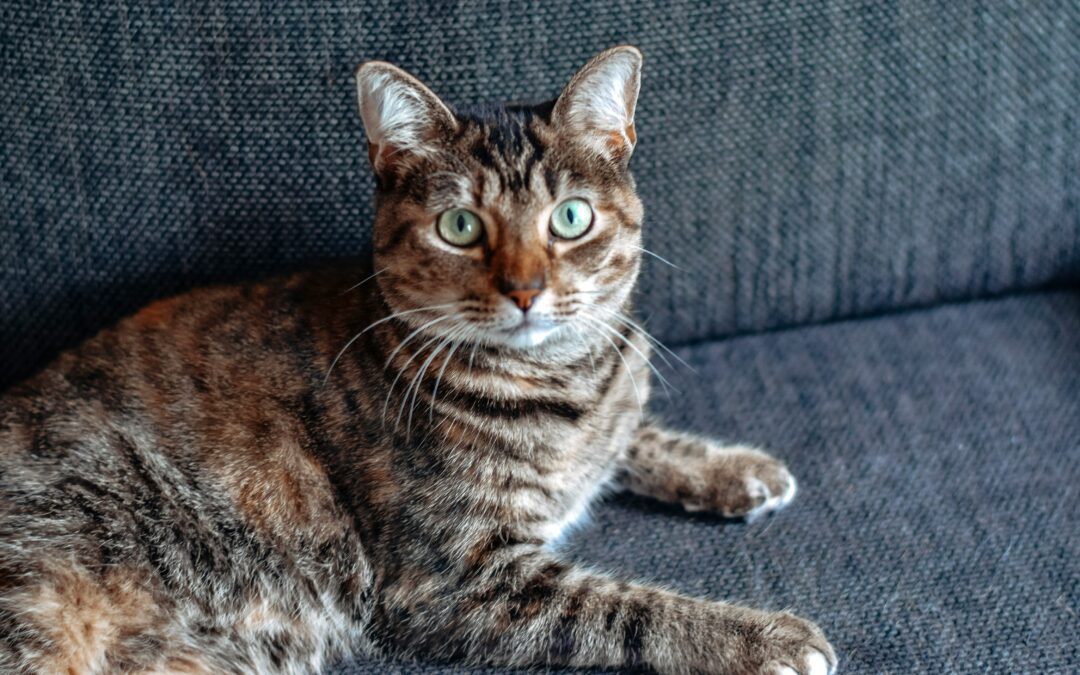Did you know your feline friends need enrichment– just like their canine counterparts? Enrichment adds stimulation to your pet’s day-to-day activities, stimulating their brain and offering opportunities to interact with their environment in new and unique ways. Providing enrichment fosters not only mental health, but helps to prevent unwanted behaviors, deal with phobias, encourage weight loss, and reduce stress, among numerous other mental and physical benefits.
Feline welfare and enrichment are based on 5 pillars of care:
- Providing a safe space for your cat
- Providing multiple, separated environmental resources (food, water, litter boxes, sources of play, etc.)
- Providing opportunities to play and be a predator
- Providing positive, consistent cat to human interaction
- Respecting your cats sense of smell
Using these pillars is an excellent way to shape a healthy and diversified enrichment plan for your felid furbabies.
Enrichment can be based on any number of resources your pet needs (pillar 2) such as play or food. Presenting new ways for them to ‘catch” or “earn” their food can help to keep their brain at work while providing a needed resource. For example, puzzle feeders help your cat to interact with a new stimulus and be positively rewarded for their hard work. Each cat is different in their drives, so if your furry friend is not driven by treats or food, you could also trial enrichment with different toys (pillar 3). Teaser toys, catnip containing stuffies, and scratching posts are all great ways to allow your cat a positive way to interact with and practice their predator-driven behaviors. As always, use toys with supervision to avoid any unwanted destruction or ingestion of toys/ toy parts. Using catnip sprays and dried flakes can also encourage your cat to use their sense of smell to interact with different parts of their environment (pillar 5). Spraying or sprinkling them on a variety of (approved) textured objects such as old carpet squares, cardboard boxes, etc. can encourage your pet to use their sense of smell to interact with their environment.
Feline enrichment can also include interactions with you, their humans! Training or grooming sessions are just two ways you can not only provide positive, consistent human-cat interaction (pillar 4) but also encourage your furry friend to stretch their abilities and exercise their brain. Teaching your cat commands can help them to problem solve and learn new activities. Many cats will learn to respond to commands as dogs do through positive reinforcement, building trust with you, their owner. Alternatively, grooming enrichment such as brushing your cat can be used to not only keep your pet’s coat clean and matte-free but strengthen the bond between you and your pet.
Monitoring how your cat responds to each type of enrichment can help you to select the best option for your cat. Cats will often seek out their favorite activities, even vocalizing to show that a certain exercise is their favorite. Some cats respond better to activities led individually (toy or smell-based activities) whereas others respond better to interactive activities (training or grooming-based activities). You know your cat best and can start with the activity you feel will bring your cat the most joy. Later on, you can explore other enrichment styles to diversify their activities!
Providing environmental enrichment not only helps foster good mental and emotional health for your feline friends but also helps to strengthen the human-animal bond– the reason we all become pet owners in the first place!
Needing ideas or tips and tricks on how to start an at-home enrichment program for your kitty? Feel free to give us a call and we’d be happy to help!

